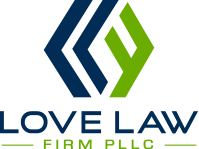
All corporate structures follow a certain protocol for establishing ownership. In the case of an LLC, it is important to fully comprehend how ownership is established, how it can be adjusted and what impacts these changes can potentially have for the business in the long run.
Structure of an LLC
When an LLC is first formed, the initial founders contribute money to get the business up and running. These individuals (or in some cases entities) are owners of the LLC and referred to as “members.” Member contributions can be submitted in both capital and non-capital form (e.g., real estate, machinery, supplies, etc.). Property contributions need to be itemized in detail so that the members can agree on a fair market value of non-capital contributions. There is no minimum or maximum amount that a member needs to contribute to be considered an owner.
After the members have settled on their LLC contributions, they are recorded on the LLC’s balance sheet in the form of an equity (i.e., ownership) account. All members’ equity account balance details their up-front contribution as well as any subsequent contributions submitted over the course of each year the business is operating. The balance sheet also records distributions paid out to each LLC owner on an annual basis in addition to a final capital account annual sum.
Initial Capital Contributions
A good starting point for establishing ownership percentage for an LLC is to first settle on what amount of capital that is required to start the business. After you have this reference point, you can simply divide from each members’ initial contribution to calculate their respective ownership positions. That’s not to say that ownership percentages must be based solely on monetary contributions—a primary advantage of an LLC is that it allows for a wide degree of flexibility when it comes to structuring the business model. Sweat equity also comes into play when it comes to considering what ownership interest each member is entitled to. Consider a two-member LLC in which one partner contributes $50,000 to the LLC but doesn’t participate in its day-to-day business operations. Meanwhile, the other member doesn’t submit a monetary contribution initially but has the skills and expertise to oversee the daily tasks needed to successfully run the business. The two members could mutually agree to split the ownership 50/50 regardless of the amount contributed.
Each members’ contribution to the start-up phase of the LLC is called a “capital contribution,” which gives them a share in the LLC as well as a right to share in the LLC’s future profits and losses. If the LLC only has one member, the owner exercises 100% ownership. In cases of multi-member LLCs, the ownership is formerly established via written agreement, typically a written document referred to as the “operating agreement.” The operating agreement is an integral document to any LLC. It is essentially the master playbook that sets out the procedures, guidelines, and contingencies by which the business will be managed. The operating agreement should clearly detail the starting member percentages of ownership and what percentages of the shares of the profits and losses they are entitled to. Members are free to dictate any terms they like assuming they do not conflict with any applicable state or federal statutes.
Impact of Ownership
Ownership rights are directly correlated with each members’ respective degree of control of the LLC. Individuals with higher percentages of ownership exercise more influence on significant decisions the company must make, and their vote will subsequently weigh more. Ownership percentage also impacts personal liability. Often, if you require a business loan, members holding over 20% ownership will be responsible for providing a personal guarantee. In the unfortunate event the business then defaults on the loan, members with higher percentage share will bear the responsibility of paying the outstanding balance.
Changes in Ownership Over Time
Change is an inherent part of the business world. Accordingly, LLC ownership percentages may need to be modified over time to adjust to market dynamics, navigate new developments or incorporate additional members. The good news is that altering LLC ownership percentages can be a straightforward, simple process that helps align your business structure with its long-term goals. That is why it is important to work with a skilled corporate attorney when drafting your operating agreement. These professionals can anticipate potential circumstances in which an ownership change is necessary and specifically tailor the operating agreement to make it a seamless process. The document should include buy-sell clauses that lay out the process of how owners can transfer or redistribute membership percentages internally.
Note that depending on the circumstances leading to the change in ownership, you may need to inform certain entities of the adjustment. For instance, if a member departing the ownership was listed as the Responsible Party with the IRS, a new one will have to be designated. Additionally, the Registered Agent for the LLC will need the contact information for any new members added. If the ownership transfer impacts any loans from banks or other creditors, the financial institution may have to approve the transfer prior to it being formally executed.
Let Us Help You
LOVE LAW FIRM is here to support you as you launch your LLC, scale your business, and efficiently respond to changes. We have the requisite experience coupled with a client-centered approach that makes our firm the ideal partner to help guide you and your LLC through all its transitions so you can concentrate on running your business. Contact us today to learn more about our comprehensive range of legal services.
For More Information
See how we can help you with your Corporate Formation here in NYS!
Francine E. Love is the Founder & Managing Attorney at LOVE LAW FIRM PLLC which dedicates its practice to serving entrepreneurs, start-ups and small businesses. The opinions expressed are those of the author. This article is for general information purposes and is not intended to be and should not be taken as legal advice.

